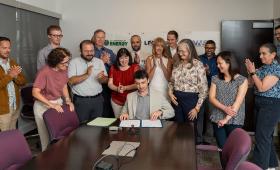LLNL scientists and collaborators 3D-printed a new and compact device configuration that allows precise control over the geometric features and interactions between the electrodes.
Science and Technology
in the News
Science and Technology
in the News
News Center
With the help of 3D printing techniques, LLNL researchers are “packaging” electronics with printable elastomeric silicone foams to provide mechanical and electrical protection of sensitive components.
LLNL certified health physicist Brooke Buddemeier has been appointed to a panel of the National Academies of Sciences, Engineering and Medicine.
LLNL researchers and international collaborators provide the first demonstration of how iron atoms, when introduced into titanium, undergo a GB transition.
LLNL releases annual flowcharts to illustrate the nation's consumption and uses of energy, as well as associated CO2 emissions.

The National Nuclear Security Administration (NNSA) has accepted Nightwatch, the first digital product developed and produced by Lawrence Livermore National Laboratory (LLNL).
LLNL researchers discover a promising new treatment that can be a boon to doctors and medical professionals dealing with the crisis of fentanyl.
LLNL and the VTT Technical Research Centre of Finland sign a memorandum of understanding with a focus on strengthening the science and technology (S&T) capabilities between the two entities.
An LLNL-led team is awarded $3.4 million to develop new alloys for first wall fusion reactors and enable commercial fusion energy.
LLNL scientists Daniel Casey, Daniel Clark and Raymond Smith have been named 2024 American Physical Society (APS) Fellows.

